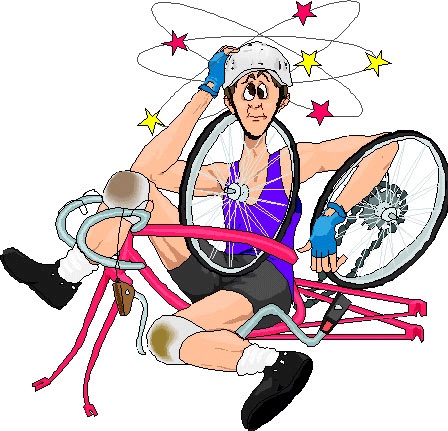
Every Cyclist Crashes - Even You!
Your WILL crash - There are things you can do to minimize the risk
“Given the amount of time I spend on a bike, I recognize there is a significant probability that my cycling career, or even my life, could end as a result of a serious cycling accident”. As a cyclist, the risk of injury requiring hospital treatment (per km travelled) is significantly greater than when in a motor vehicle. The more you cycle, the greater the risk - You will crash!
There’s three options:
- Ignore the risk.
- Worry, be anxious and fearful. Ride less, and curtail some of the more risky riding that I love.
- Turn the concern into action, and learn to be safer on the road. Move the odds in my favour.
The majority of cyclists choose the first two options! I’ve chosen to manipulate the odds, which is why I’m a CanBike instructor, a trained cycling coach under the National Coaching Certification Program (NCCP), why I spend so much time off the bike learning about cycling safety, and why I’m always practicing my bike skills, and teaching them to others.
The facts of cycling accidents - You’re probably barking up the wrong tree!
Bad drivers are not a significant issue! The data on cycling accidents requiring hospital treatment indicates:
- 50% of all accidents do not involve a motor vehicle
- Of the accidents that involve a motor vehicle, half are the clearly the fault of the cyclist.
- Of the remaining 25% of accidents where the cyclist is not at fault, a significant percentage could still have been avoided by actions on the part of the cyclist.
There’s good news here… Cyclists have the ability to significantly reduce the probability of over 80% of the cycling accidents causing injury!
Cyclist speed is usually not a factor, and is not related to the seriousness of the injury. This is especially true as we get older and bones get brittle and joints weak. In fact, many serious cycling injuries happen when cyclists are slowing and preparing to stop. Particularly dangerous are:
- Intersections, especially where slowing or stopping may be required
- A group of cyclists stopping (eg. taking a break), or significantly slowing (eg. construction, train tracks, etc)
- Cyclists I know have fallen at a walking pace and:
- fractured pelvises
- broken collar bones
- got serious concussions
- hurt hips or knees badly enough to be off cycling for weeks.
Slowing down won’t significantly reduce your risk, and many common, benign cycling situations are the most risky!
Where to Start: Acceptance, Anticipation, Attention
Before we get into specific tips and techniques, I’ve learned there are 3 things that are critical to cyclists improving their chances on the road:
- Acceptance: If you don’t think there is anything you can do to reduce your risk of a serious cycling injury, or you don’t think you can learn the techniques and skills, if you believe “you can’t teach an old dog new tricks”, or you are more comfortable “burying you head in the sand”, then you might as well stop reading now! (And I know who you are - when I’m riding with you, I’ll be anticipating that you will do something that will put me in danger, and I’ll be paying extra attention to you on the road!) You have to have a willingness to put some effort into learning techniques and trying to improve your safety!
- Anticipation: Train you mind to anticipate what can go wrong. Think about what might happen and what your options are to prevent the issue, or what options you have to react to it. Think about what you don’t know. Talk about accidents and near misses and how they could be prevented. Learn and practices skills. “Be Prepared”. This is a never-ending process! (We could call this preparation, but I wanted a word that started with “A”!)
- Attention: All the anticipation, preparation and training will do you no good if you don’t recognize a danger when it arises on the road! “Distracted cycling” is as dangerous as distracted driving. Yes, this is hard… we want to enjoy the scenery, chat with our friends, and have a good time. With training and care, we still can, as long as we always keep our heads up (literally!) and part of our brain scanning our environment for potential issues.
The bottom line is “As a cyclist, using your brain can save your body a lot of pain”. In future articles, we’ll add the fourth A:
- Action and talk about specific things we can do to minimize the odds of a serious injury on the road.
